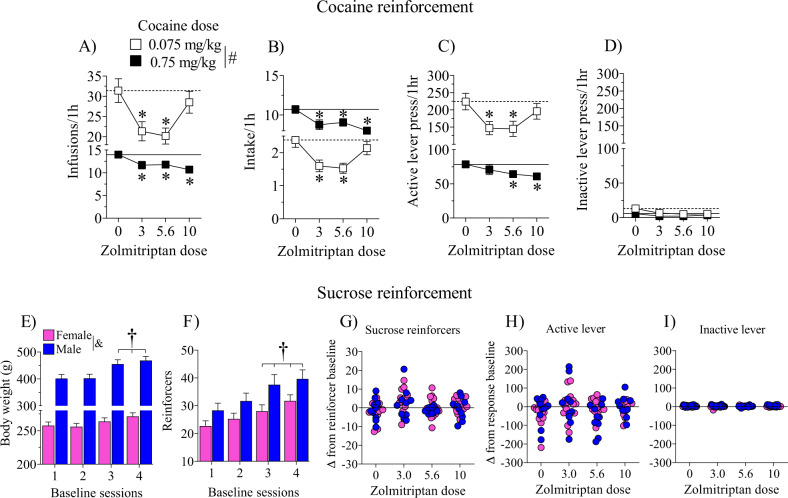Fig. 1. Effects of the 5-HT1D/1B receptor agonist, zolmitriptan, on behaviors under cocaine and sucrose reinforcement.
There were no main effects nor interactions with sex for any of the operant behavioral measures and therefore these data are collapsed across sex. Mean (±SEM) is shown for cocaine infusions (a), intake (mg/kg) (b), active (c) and inactive (d) lever responses during 2-h sessions where the training dose (0.75 mg/kg, i.v.) of cocaine was available for 1h followed by a low dose (0.075mg/kg, i.v.) of cocaine available for 1h. Horizontal lines correspond to the mean of vehicle pretreatment under the low (dashed line) and training (solid line) cocaine doses. Rats tested for sucrose reinforcement showed sex differences in body weight (e) and reinforcement baselines (f). Therefore, the effects of zolmitriptan are expressed as a difference from each respective baseline for sucrose reinforcers (g), and active (h) and inactive (i) lever responses during 30-min sessions. All rats (n = 28/dose for cocaine and n = 24/dose for sucrose) were pretreated 15 min prior to the start of the test sessions with either vehicle or zolmitriptan (3.0–10 mg/kg, s.c.). Asterisks (*) represent a difference from vehicle, pound sign (#) represents a difference between low and high cocaine dose, dagger (†) represents difference from first baseline session, and ampersand (&) represents difference between male and female rats (p < 0.05).

